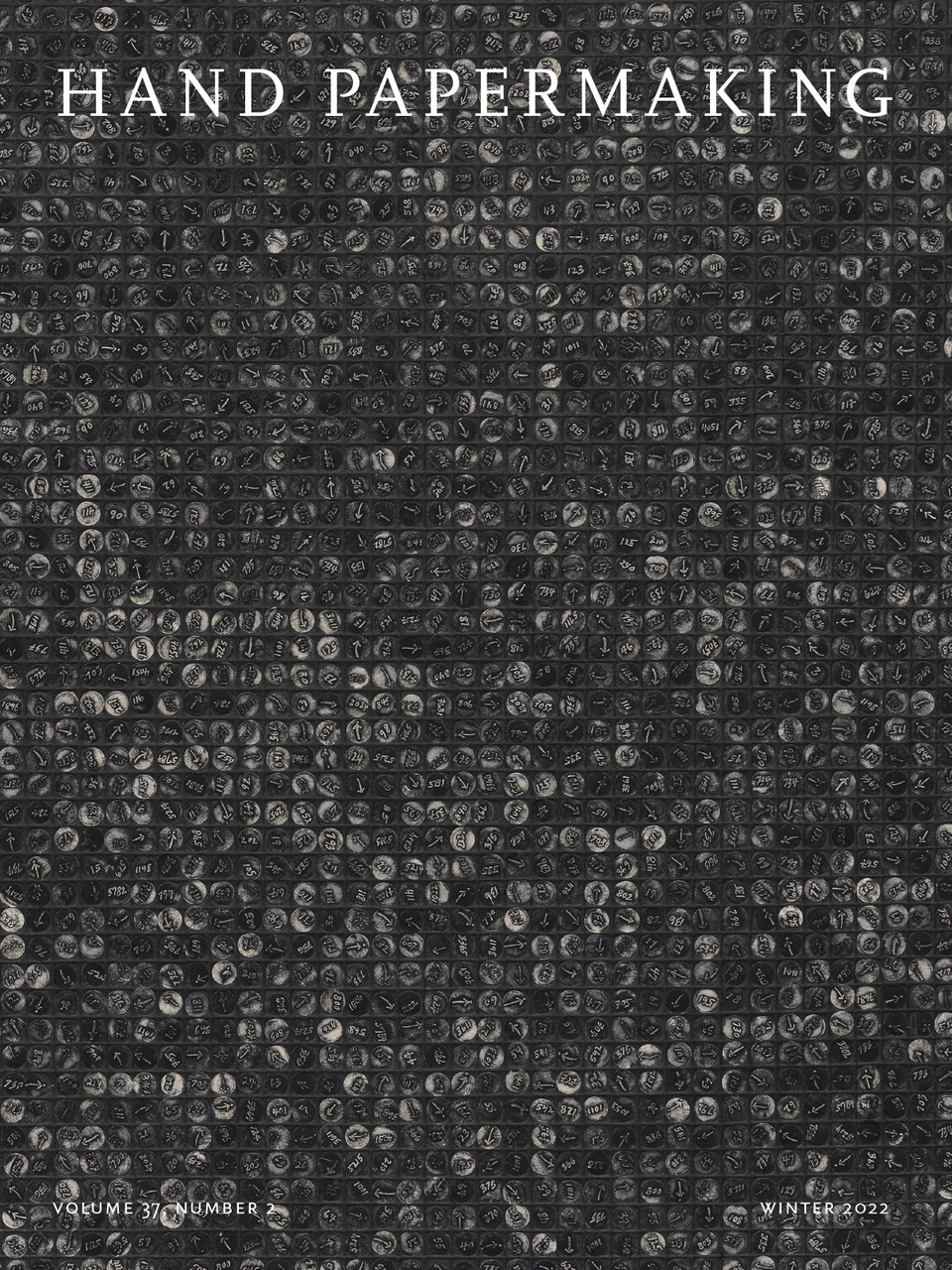As I have progressed in my creative papermaking and pulp-painting practice, I have graduated from freehand manipulation to more controlled methods using printmaking-related techniques, primarily cut Dura-lar stencils and silkscreen. In my capacity as a professional collaborator for the Brandywine Workshop and Archives and for the Brodsky Center at PAFA, both located in Philadelphia, I work with artists to generate an edition in handmade paper, as few as 8 pieces or as many as 40, depending on the scale and complexity of the project. While short in duration, about 10 to 12 days, these projects can involve as many as 12 colors of pulp paint applied in successive layers. For this reason and due to the constraints of pandemic-imposed distancing, I devised a relatively foolproof registration system that can be safely and expeditiously handled by one person with very little margin for error.
My system uses a low-tech registration bar and neodymium magnets that allow for easy placement of the stencils and a satisfying SNAP. These exceptionally strong magnets are often used for displaying an unframed work on/of paper on the wall, and they can be purchased in a variety of sizes and thicknesses. I custom cut my registration bar from scraps of mat board, book board, or even foamcore to a size that is slightly longer than one side of my stencils. I determine three points along the middle of the bar to inlay three magnets, and then I trace around them for placement and use an X-acto to cut away layers of board so the magnets will be flush to the board surface. The registration bar is wrapped in packing tape for “waterproofing,” which additionally keeps the magnets in place and will maintain useful friction on wet Pellon.
In the creation of the cut stencils, before any hand-cutting begins, I make sure that all stencils are trimmed to a uniform size and larger than the image area, including extra for the registration bar, which I typically place on my dominant side. Additionally, I keep a “key” image (a drawing or digital printout) to which all stencils will be aligned with registration crop marks. After hand-cutting, I check the stencils again for correct registration before adding magnets. I align each stencil to the designated area on the registration bar, keeping the key image beneath, and lay three matching magnets on the stencil. I trace their outline with permanent pen (necessary in case the magnets begin to slip with use) and place two pieces of electrical tape in a “+” over the magnet, using a bone folder to remove air and seal the tape to the matte Dura-lar surface. Creating a registration system with silkscreen stencils is a little more challenging. There is always some warping to the image after it has been removed from its stretcher, and in particular when the silkscreen is wet, the fabric can shift and distort even more. I create the registration for silkscreen stencils while dry, and I allow the electrical tape and magnets to rest a full day before introducing the exposed silkscreens to water. To date, I have had a good success rate, registering up to three silkscreen layers to each other, 19 x 19 inches each, using only one side as registration. I have also learned to embrace the variability of this easily warped fabric. The cut stencils and silkscreen stencils can also be used in combination, as demonstrated in the accompanying photos.






